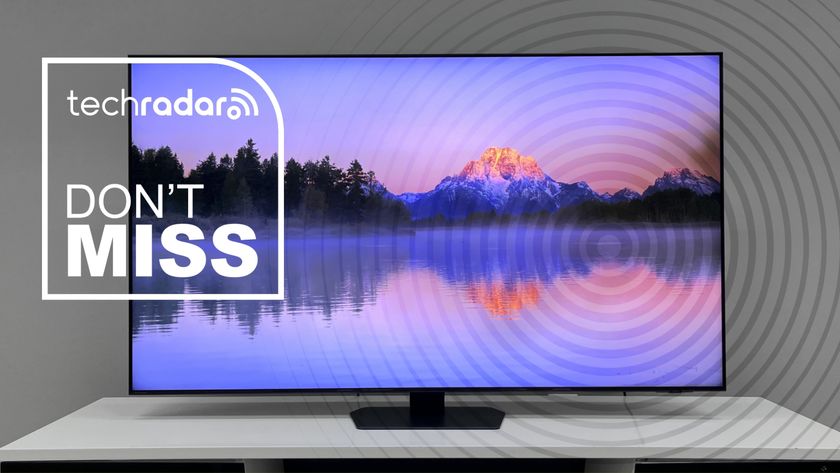TechRadar Verdict
There's a lot to like about the FX55. The lens is superb and the zoom range is more than enough for most. Picture quality in low light is not great but the excellent intelligent Auto mode makes up for it. A great camera for the casual or novice photographer
Pros
- +
Logical, easy-to-use menus
Well built
Great value
Cons
- -
Poor quality at higher ISOs
Why you can trust TechRadar
Panasonic churns out compact cameras like sausages from a sausage factory. At the end of this string of products (14 so far this year) comes the FX55, which comes with a very creditable 8MP sensor, a 28mm wide-angle lens, face-detection technology and a 3-inch LCD spread all over the back. What makes it taste a little bit different to its peers is the intelligent Auto mode, of which more later.
The FX55 is a small and attractive camera, compact enough to slide neatly in the back pocket of your jeans or into a handbag. And, like all small Panasonic cameras, it has the build quality to match the looks. Although not quite hewn from a solid block, the mostly metal construction should cope with a few knocks during its travels.
Bijou as it is, the dimensions allow room for that 3-inch screen - surely the limit if cameras are to remain pocket sized. Not only is this LCD big, it's also bright and sharp. Like every other screen, it can struggle in bright sunlight but there's a power LCD setting to give you a little extra brightness when needed. There's also a useful high-angle setting for overhead shots.
People familiar with Panasonics will recognise the position of the buttons and dials on the FX55 but one feature they won't recall is the joystick-like controller. Anyone with slightly larger fingers will have found other Panasonics difficult to use because of their tiny controls, but this joystick gives hope.
Sharp shooter
Compared with the latest crop of 12MP compacts, the 8MP sensor sported by the FX55 might seem run-of-the-mill, but it's still a lot of resolution to deal with. Panasonic has long realised the need for good lenses to get the best from tiny sensors and, once again, has used quality Leica optics.
Although this one only has a limited 3.6x zoom range it delivers the goods in terms of sharpness, even into the corners at the 28mm wide-angle. The zoom moves at a smooth and steady pace without any nasty steps, while the autofocus, though not the speediest we've come across, is accurate in all but the lowest light.
In operation, the camera is a breeze. The menu system is logical and simple. The FX55 has dispensed with the simple mode found on some of its other models and replaced it with the intelligent Auto mode to automatically select the most appropriate setting without any user interface.
So while you have the choice of 20 scene modes, selecting intelligent Auto allows the camera to make decisions for you. In this mode, it's supposed to correct camera shake, set the ISO, activate face recognition if needed and detect whether the theme of the image is portrait, landscape, nighttime or a macro shot.
This is some claim but amazingly it works. We went from portrait shots where the camera immediately locked on to faces, to close up pictures where the macro facility came on instantly. We tried to fool it, but the little FX55 wasn't fazed. If you enjoy taking pictures but have no intention of understanding ISO or changing scene modes, this will be a utopian setting.
Whatever your photographic skills, at ISOs of 200 or below you'll be rewarded with excellent images with nicely saturated but not overdone colours. The lens is superb and there's only minimal distortion, while there's little to no colour fringing throughout the zoom range. Beside the lens is a tiny flash. It does lack power but it fires accurately at close range and rarely overexposes an image.
So far the FX55 is scoring highly but then we come to the Achilles' heel of all small Panasonics: poor image quality in low light. At ISOs of 400 or above the noise reduction is so great that images almost have a watercolour texture when viewed close up. Any fine detail is totally lost.
This is the one downside of what is otherwise a well-built, handsome, yet strangely unexciting camera.
Via PhotoRadar
Tech.co.uk was the former name of TechRadar.com. Its staff were at the forefront of the digital publishing revolution, and spearheaded the move to bring consumer technology journalism to its natural home – online. Many of the current TechRadar staff started life a Tech.co.uk staff writer, covering everything from the emerging smartphone market to the evolving market of personal computers. Think of it as the building blocks of the TechRadar you love today.

Why Bill Gates is wrong about AI and 3 things he needs to realize

The Samsung QN90D mini-LED is our favorite TV for sports, and it’s hit its lowest-ever price in Amazon’s Spring Sale

I’ve got bad news for you if you use ChatGPT, Perplexity, or Gemini as your main search tool - AI web search isn't worth your time, yet










